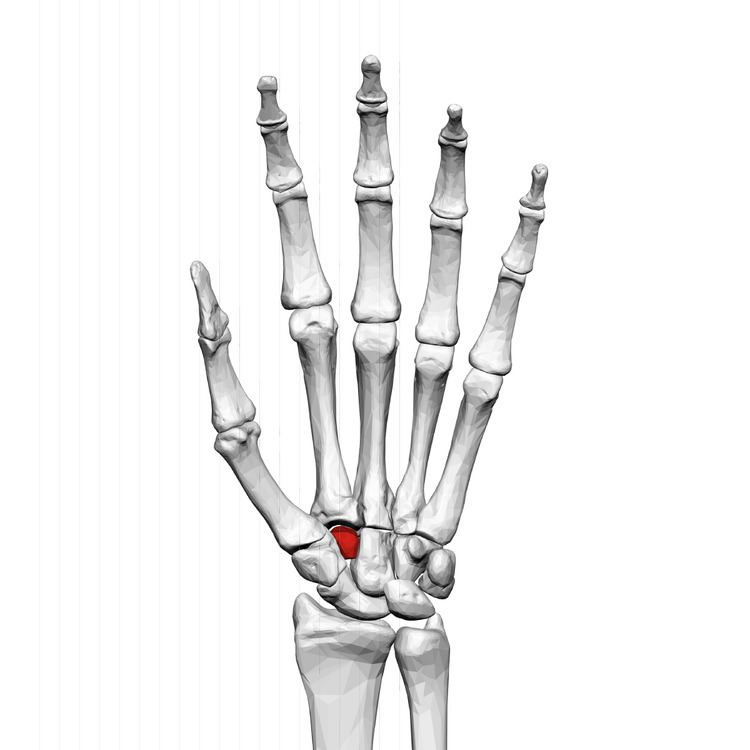Dorlands/Elsevier o_07/12598807 FMA 23724 | TA A02.4.08.010 | |
 | ||
Articulations articulates with four bones:scaphoid proximallysecond metacarpal distallytrapezium bone laterallycapitate medially Latin os trapezoideum, os multangulum minus MeSH A02.835.232.087.319.150.805 | ||
The trapezoid bone (lesser multangular bone) is a carpal bone in tetrapods, including humans. It is the smallest bone in the distal row. It may be known by its wedge-shaped form, the broad end of the wedge constituting the dorsal, the narrow end the palmar surface; and by its having four articular facets touching each other, and separated by sharp edges. It is homologous with the "second distal carpal" of reptiles and amphibians.
Contents
Structure
The trapezoid is a four-sided carpal bone found within the hand. The trapezoid is found within the distal row of carpal bones.
Surfaces
The superior surface, quadrilateral, smooth, and slightly concave, articulates with the scaphoid.
The inferior surface articulates with the proximal end of the second metacarpal bone; it is convex from side to side, concave from before backward and subdivided by an elevated ridge into two unequal facets.
The dorsal and palmar surfaces are rough for the attachment of ligaments, the former being the larger of the two.
The lateral surface, convex and smooth, articulates with the trapezium.
The medial surface is concave and smooth in front, for articulation with the capitate; rough behind, for the attachment of an interosseous ligament.
Function
The carpal bones function as a unit to provide a bony superstructure for the hand.
Clinical Significance
Isolated fractures of the trapezoid are rare, representing a 0.4% of the total, thus being the least common of all carpal fractures. This is because it’s in a fairly protected position. Distally, it forms a stable, relatively immobile joint with the second metacarpal, radially and proximally it forms strong ligaments with the trapezium and the capitate ulnarly, scaphoid respectively.
However, injury can occur through axial force applied to the second metacarpal base. Thus subluxations, such as ones caused by delivering blow are not uncommon. Direct trauma to the bone can also cause fracture.
Due to is rarity; a standard treatment has not been established. Having a wide range of possible treatments, including rest, surgery and casting.
History
The etymology derives from the Greek trapezion which means "irregular quadrilateral," from tra- "four" and peza "foot" or "edge." Literally, "a little table" from trapeza meaning "table" and -oeides "shaped."
